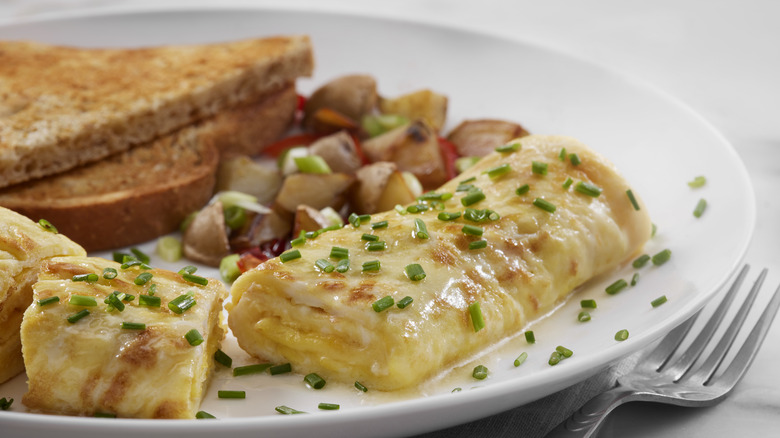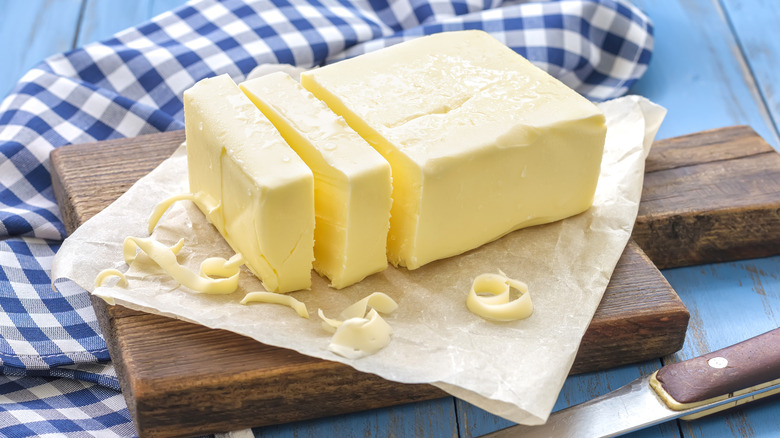The Butter Trick That Will Help You Get The Creamiest Omelets
Omelets are one of the most celebrated breakfast foods. Whether you are a fan of the big, fluffy American type that is brimming with meats, cheeses, and vegetables or prefer a more delicate French version of this egg dish that looks more like a tightly rolled crepe when it is finished and is free of fillings, soft and tender is the goal. But regardless of your preference, when you are whisking your eggs and prepping them for the frying pan, you should save your milk for your cereal because the only dairy you want to be reaching for when making this eggy dish is butter.
Cold butter that has been gently diced and whisked together with your eggs is the secret to producing a velvety smooth and creamy omelet. If you were to make omelets side by side, one using butter and one without, you would discover that an omelet made without butter is going to be like chewing rubber. But when you use cold butter, it covers the proteins with its golden fatty goodness, prohibiting the tight bonds to form that create a dense omelet.
Try freezing your butter
Why does the butter need to be cold? So it won't melt too quickly and fry your eggs. In fact, it is recommended that you consider freezing your butter before making your omelet because this will ensure it melts at a slower rate and disseminates more evenly, producing a soft, fluffy end product you can't wait to sink your teeth into.
Some even continue with the use of butter by spreading it over the eggs for added sheen once they're done cooking.
There must be something to this technique because, per the "Today" show, Geoffrey Zakarian, of "The Kitchen" and "Chopped," uses quarter-inch pieces of frozen diced butter when making his rendition of this breakfast classic. And, he also adds an extra egg yolk to his omelet, which not only yields a brighter yellow omelet but one that tastes creamy and decadent.

